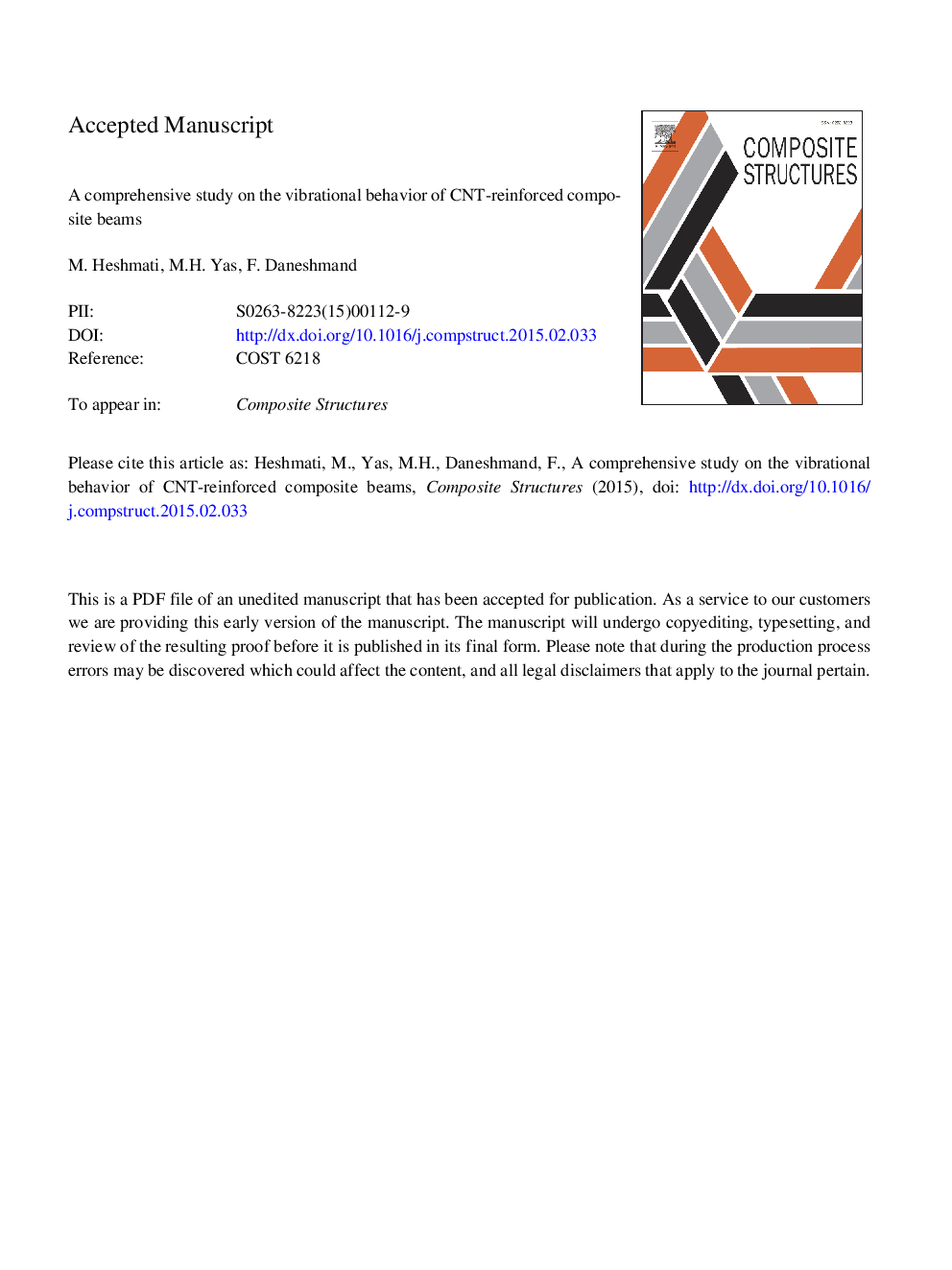| Article ID | Journal | Published Year | Pages | File Type |
|---|---|---|---|---|
| 6707027 | Composite Structures | 2015 | 43 Pages |
Abstract
Introducing carbon nanotubes (CNTs) into a polymer matrix can significantly improve the mechanical properties of nanocomposites. However regarding current processing techniques, there are several factors influencing the effective properties of carbon nanotube reinforced composites. Among these important factors, the interface, waviness, agglomeration, orientation and length of the nanotube are key parameters affecting the mechanical properties of nanocomposites. The effects of carbon nanotube length, waviness, agglomeration and distribution on the vibration behavior of functionally graded nanocomposite beams reinforced by single-walled carbon nanotubes (SWCNTs) are investigated in the present study. Monte-Carlo simulation is used to determine the effective elastic properties of wavy CNTs and a two-scale micromechanical model is developed to calculate the elastic properties of nanocomposites. The large scale model includes the CNT-free matrix and the clustered CNT/matrix inclusions. The small scale model addresses the property of the clustered inclusions containing the randomly oriented, transversely isotropic CNTs and matrix. Timoshenko beam theory is adopted to derive the governing equations and the finite element method is employed to discretize the model and obtain the numerical solution. The results show that the above mentioned parameters of nanotubes have significant effects on the vibrational behavior of functionally graded nanocomposite beams.
Related Topics
Physical Sciences and Engineering
Engineering
Civil and Structural Engineering
Authors
M. Heshmati, M.H. Yas, F. Daneshmand,
